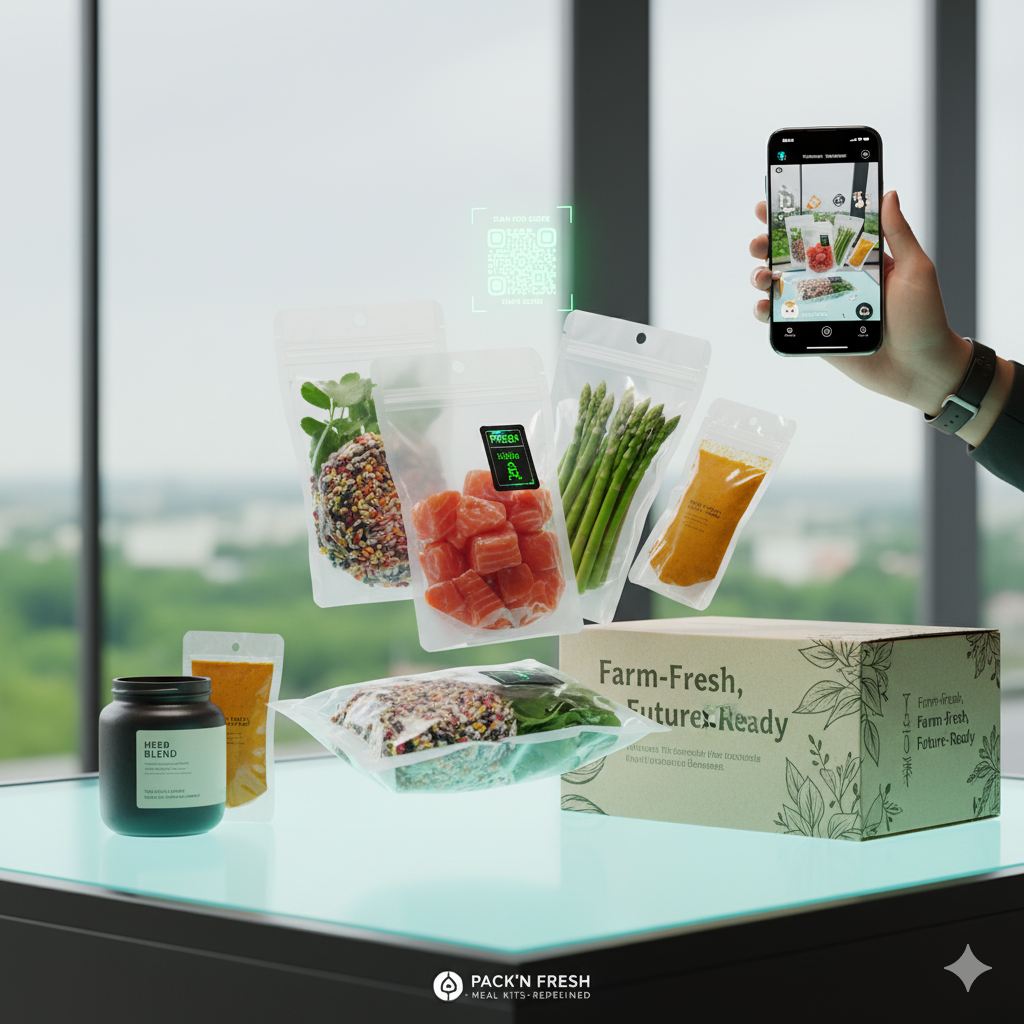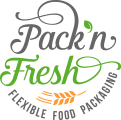
Innovative meal kit packaging is the single most important factor driving the industry’s explosive growth. Meal kits are one of the fastest-growing segments in food, projected to hit $64.27 billion globally by 2030. But this success is built on a complex logistical promise: delivering fresh, perishable food safely to a customer’s doorstep. Get the packaging wrong, and you face a cascade of failures: spoiled food, high return rates, and a damaged brand reputation. Get it right, and you unlock customer loyalty, drastically reduced waste, and incredible operational efficiency.
The container is no longer just a box; it’s a key part of the product. Here are the seven meal kit packaging innovations that will define the industry in 2025 and beyond.
1. Smart Packaging Becomes an Expectation
What was once a novelty is now a necessity. Smart packaging, which uses interactive features like QR codes, NFC tags, and even freshness sensors, is how brands build trust. Customers now expect to scan a pouch with their phone and instantly see detailed recipes, video cooking guides, exact allergen information, or the farm-to-table sourcing details of their ingredients. By 2025, a meal kit without this layer of interaction will feel outdated and less transparent. This technology transforms the package from a simple container into a digital hub for the entire cooking experience.
2. Compostable Films and Fiber-Based Trays Replace Plastics
The original sin of the meal kit industry was its mountain of plastic waste. Today’s consumers are highly conscious of sustainability, and brands are responding. Municipal bans and retailer mandates are pushing compostable films, recyclable pouches, and molded fiber-based trays into the mainstream. For a meal kit brand, which already generates significant material waste by its very nature, switching to sustainable meal kit packaging isn’t just an ethical choice—it’s an essential strategy for earning and maintaining customer trust.
3. Precision Portion-Control Pouching
Consumers hate food waste, and brands hate cost waste. This shared goal is driving the demand for precision portioning, especially in flexible pouches for formats under 2 lbs. The ability to automatically and accurately measure the exact portion of spices, a delicate sauce, or a specific powder blend is critical. This innovation ensures a consistent, perfect recipe every time for the customer, eliminates food waste at home, and dramatically improves the brand’s unit economics by preventing over-portioning.
4. Active Packaging Extends Critical Shelf Life
A meal kit’s supply chain is a race against the clock. Freshness is the entire value proposition. This is where active packaging technologies become a game-changer. Innovations like Modified Atmosphere Packaging (MAP), which adjusts the air composition inside a pack, along with oxygen absorbers and ethylene-scavenging films (which slow ripening), can extend the shelf life of fresh produce and proteins by days or even weeks. For brands shipping kits cross-country, this technology is the difference between a fresh, crisp salad and a spoiled, returned box.
5. Refillable Models Create Loyalty Loops
The subscription model is evolving. Customers are now embracing refill models for pantry staples. Smart meal kit brands are adopting this by shipping a durable, branded spice jar or oil bottle in the “starter kit.” Subsequent meals then arrive with the spices and oils in small, 100% compostable refill pouches. This simple change reduces waste, keeps your branded container in the customer’s kitchen as a constant reminder, and builds powerful “loyalty loops” that encourage repeat subscriptions.
6. ERP-Backed Supply Chain Visibility
The most important innovations aren’t always customer-facing. Behind the scenes, ERP (Enterprise Resource Planning) integration has become a massive competitive edge. A meal kit brand that partners with an ERP-backed copacker gains real-time, end-to-end visibility into their entire operation. They can see ingredient stock levels, track lot codes for compliance, and monitor production timelines instantly. This data-driven approach cuts risk, ensures food safety, and enables brands to scale rapidly and reliably.
This traceability is exactly why choosing a copacker with an ERP is a non-negotiable for growing brands.
7. The Unboxing Experience as a Marketing Channel
In the age of social media, the unboxing experience *is* the first experience. On platforms like TikTok and Instagram, your meal kit packaging is often the first impression a potential customer will ever see. Smart brands treat this as a powerful, free marketing channel. Using seasonal designs, limited-edition graphics for holidays, and vibrant custom printing on pouches can make the meal kit feel premium, exciting, and highly shareable. A great unboxing experience turns your customers into your marketers.
Final Word
By 2025, your meal kit packaging won’t just be a container—it will be your most valuable strategic asset. The winners in this crowded space will be the brands that embrace packaging that is smart, sustainable, precise, and customer-centric. At Pack’n Fresh, we help meal kit brands integrate these innovations today—from precision portioning to active packaging—so they can stay competitive and thrive tomorrow.
